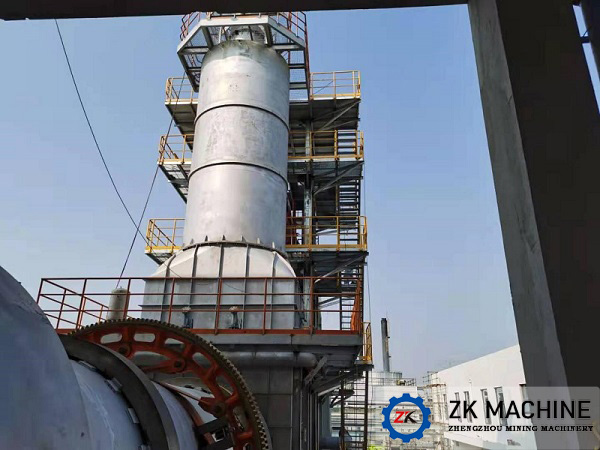Selection of Refractory Materials for Solid Waste Incinerato
Date:2021-05-07 08:50:18
Author:admin
Views:
114
The solid waste incineration rotary kiln has a variety of materials. Although the temperature is not high, it is too corrosive. It is sintered at 800°C in a rotary kiln, and then burned at 1100-1200°C in the second combustion chamber. The overall temperature is not high, but the strong corrosiveness is a headache for refractory manufacturers. Because of the strong corrosiveness, there are many uncertainties, especially solid waste, the corrosion situation is uncertain, acidity, alkalinity, and fluorine will be different in the same part of the kiln lining.

If the rotary kiln is burned once, the temperature is 800℃, and the temperature of the outer wall of the kiln is 150℃. High-aluminum castable can be used as the lining first, because if small rotary kilns are cast with castable, the integration with the movable kiln body is very beneficial, and the air tightness is also good. The thickness can be 150-200mm. The temperature of the high-temperature cyclone part, the lower silo of the waste heat boiler and the quenching tower are not high, but the degree of wear is high, so the use of high-aluminum castable can meet the requirements.
The temperature of the second combustion chamber is 1200℃, the corrosive gas in liquid, gas, and flue gas contains hydrogen, nitrogen, and fluorine, and there are salt particles and fly ash. The lining of the kiln is seriously corroded. According to the actual situation of this part, it is the best choice to use magnesia castable as the inner lining. This is because the magnesia castable not only has strong corrosion resistance, but also has high peeling resistance. However, the price of magnesia castable is high, and the characteristic of magnesia materials is high temperature resistance. Because the secondary combustion temperature is not too high, high wear-resistant castable can also be used. Wear-resistant castable also have the performance of corrosion resistance and high wear resistance coefficient.
Whether the choice of high wear-resistant castable and magnesia castable is based on user cost analysis. Lightweight castable can be selected for the moisturizing layer. In principle, light castable and lightweight bricks can be used when castable are cast. It is best to use a moisturizing layer such as fiberboard, because castable will make the fiberboard damp. The thickness is reduced, causing the castable to fall off.

